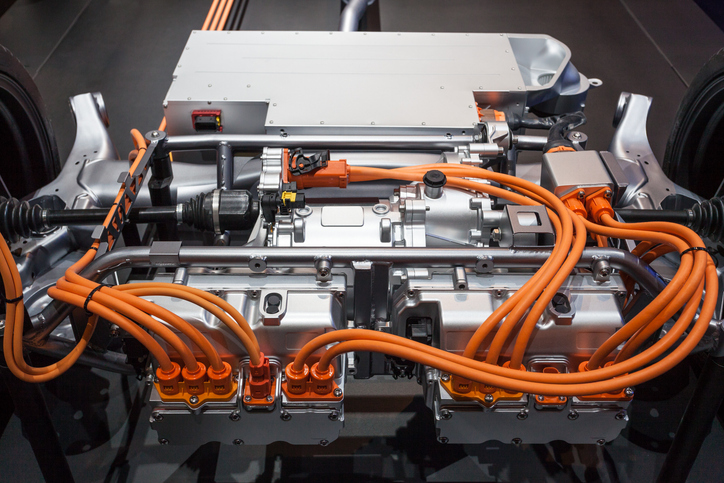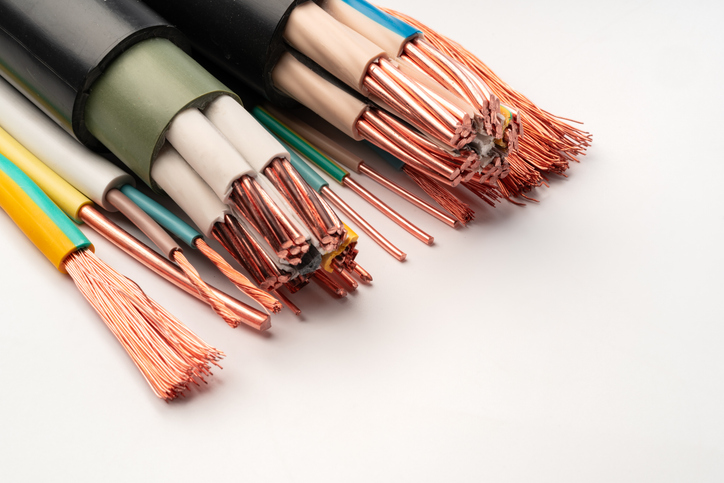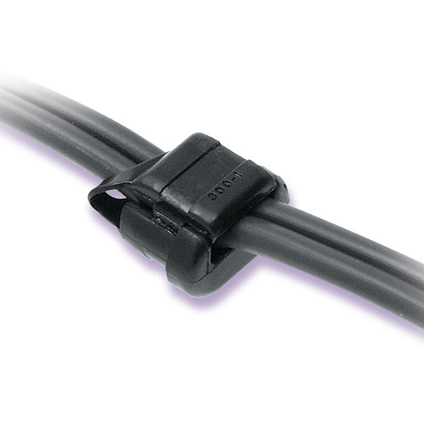Choosing the Right High-Voltage Cable for Wind Turbines
Over the past several decades, wind power has come to play a critical role in power generation and renewable energy. Inside each spinning turbine is a complex infrastructure of electrical systems and high-voltage cables that help turn air into electricity.
Wind turbines are one of the most demanding cable environments out there. Choosing the right high-voltage wind turbine cable means examining many different factors. Beyond voltage rating, the choice depends on durability, flexibility, and long-term performance. The three most common high-voltage cables in wind applications are DLO, SOOW, and SJTOOW.
Today, we’ll break them down to help you find the best wind turbine cable for your needs.
Cable Challenges in Wind Turbine Applications
Wind turbine components must withstand uniquely harsh conditions. At the top of the turbine are large blades on top of a nacelle, or large enclosed housing that contains the key mechanical components that convert wind into electricity.
Nacelles rotate to face the wind (this process is referred to as yawing). Inside the nacelle, components move and vibrate, meaning the cables must be highly flexible, durable, and able to withstand constant motion, weather exposure, heat, and stress.
Wind turbine cable needs to meet the following challenges:
- High flexing and vibration: Particularly for moving components.

- Temperature changes: Turbines go from subzero wind chills to high internal heat.
- Moisture and chemical exposure: Turbine cables must function outdoors.
- Heavy electrical loads: To consistently deliver the generated power.
These hefty demands mean that wind turbine cables must hold certain properties. The cabling must have high-strand flexibility. Wind turbine cable should be flame and abrasion-resistant. They should withstand mechanical stress well and offer stable, consistent performance under variations in voltage.
Wind turbine cable applications typically call for three types of cables: DLO, SOOW, and SJTOOW. Here’s how to choose between the different wind turbine cable types.
DLO, SOOW, and SJTOOW Cable Types: A Quick Guide
The three types of cable are DLO (Diesel Locomotive Cable), SOOW (Service Oil-Resistant Oil/Water), and SJTOOW Cable (Junior Service Thermoplastic Oil/Water Resistant). Here’s how the three types compare and how to make your selection.
DLO Cable (Diesel Locomotive Cable)
DLO Cable was originally made for diesel locomotives. It also happens to have the rugged, high-performance capacity that’s required for wind turbine power transmission. DLO cable is rated for voltages up to 2000V. The CPE (chlorinated polyethylene) jacket protects the cable against harsh environments with chemical, moisture, and UV resistance.
DLO Cable is flexible, even in cold and fluctuating temperatures. The flame-retardant cables are easy to install and manage, even in tight and dynamic spaces.
- Voltage rating: Up to 2000V
- Jacket: CPE (chlorinated polyethylene)
- Benefits: Exceptional resistance to oil, flame, abrasion, and solvents
- Applications: Generator connections, power distribution, and collection systems
DLO is an especially good option for high-amperage applications. DLO is the right wind turbine cable to choose from when durability and current carrying capacity are required.
SOOW Cable (Service Oil-Resistant, Oil/Water)
SOOW is another type of cable consistently used in wind turbine applications. This flexible and portable cable is rated for medium-duty use but has excellent resistance to harsh environments.
SOOW cables consist of different layers. The EPDM (or Ethylene Propylene Diene Monomer) inner layer surrounds the copper conductor, offering excellent heat resistance (typically rated to 90°C) and electrical insulation. The EPDM layer is flexible, resistant to ozone and UV, and acts as internal armor to support electrical performance.
The external jacket consists of a neoprene outer layer. The neoprene acts as a tough outer skin, holding up to dragging, flexing, and flame. It's also oil and water-resistant and can withstand outdoor and industrial conditions and UV.
- Voltage rating: 600V
- Insulation/Jacket: EPDM rubber layer with a neoprene outer layer
- Benefits: Excellent resistance to oil, water, UV, and abrasion
- Applications: Tower lighting, control systems, and auxiliary power feeds
The combination of EPDM and Neoprene makes SOOW cable the best solution for flexible, medium-duty power and control systems. In wind turbine towers, where the cables face oil, water, movement, and outdoor conditions, SOOW is a good choice thanks to its durability and flexibility.
SJTOOW Cable (Junior Service Thermoplastic Oil/Water Resistant)
The other popular cable choice for wind turbine applications is SJTOOW cable. This is a light-duty, portable cable. Its flexibility makes it an excellent choice for space-constrained areas.
To understand the makeup of the SJTOOW cable, we can break down the name. The S stands for service cord, meaning this flexible cable is for general use. It also has a J to indicate the junior rating (300V instead of 600V). The T represents the lightweight thermoplastic insulation. The OO and W tell us that this cable insulation is oil-resistant, as well as the outer jacket, which is weather- and water-resistant.
- Voltage rating: 300V
- Jacket: TPE (thermoplastic elastomer)
- Benefits: Lightweight, cost-effective, and easy to install
- Applications: Sensors, internal lighting, and monitoring equipment
These wires are best for indoor or control wiring in wind turbine towers. These light, flexible cables are a good solution when space, weight, and cost are important factors. SJTOOW cable is a savvy choice for low-power control applications within various turbine structures.
How to Choose the Right Cable for Your Wind System
If you're trying to find the best cable for your wind turbine applications, look at the following determining factors:
- Voltage requirements
- Motion/flexibility needs
- Environmental conditions
- Mechanical wear, vibration, and stress
- Service life, replacement frequency, and maintenance requirements
- Compliance with industry standards such as UL, CSA, and RoHS
These factors should help you decide which of the cable types fits your needs and will ensure safety and performance of wind turbines.
IEWC Is Your Partner for High-Performance Wind Cabling
Need help selecting the right cable? At IEWC, we understand the unique demands of the wind turbine and power generation industry. We can help you find the best solution for your applications.
We are well-versed in renewable energy applications and carry an extensive inventory of DLO, SOOW, and SJTOOW cables. We also have custom cable solutions for unique applications and extreme environments. We can also help with custom lengths and specialty requirements.
You’ll enjoy fast fulfillment with IEWC. Should you have any questions, we offer responsive and knowledgeable tech support.
Wind turbines play an essential role in power generation, and the three types of wind turbine cables are an important part of the infrastructure’s ecosystem, balancing voltage capacity with flexibility and durability.
When you have the right high-voltage cables for your wind and power generation applications, you'll have fewer breakdowns, lower maintenance costs, better performance, and greater system reliability. Contact IEWC to help you build a strong wind system designed to last.
Related Resources

What is a Cable?
Cable, or cabling, consists of the twisting together of two or more insulated conductors.Learn More
High Voltage Wire & Cable Guide
High-voltage or HV wire and cable are necessary for many industrial applications that rely on dependable high-power transmission. Whether you’re looking for the right HV cable for your application or trying to learn more about how HV wire and cable work, we’ll break it down for you.Learn More
How to Choose the Right Wire or Cable
In selecting a wire or cable for an application, several factors should be considered. Learn More


